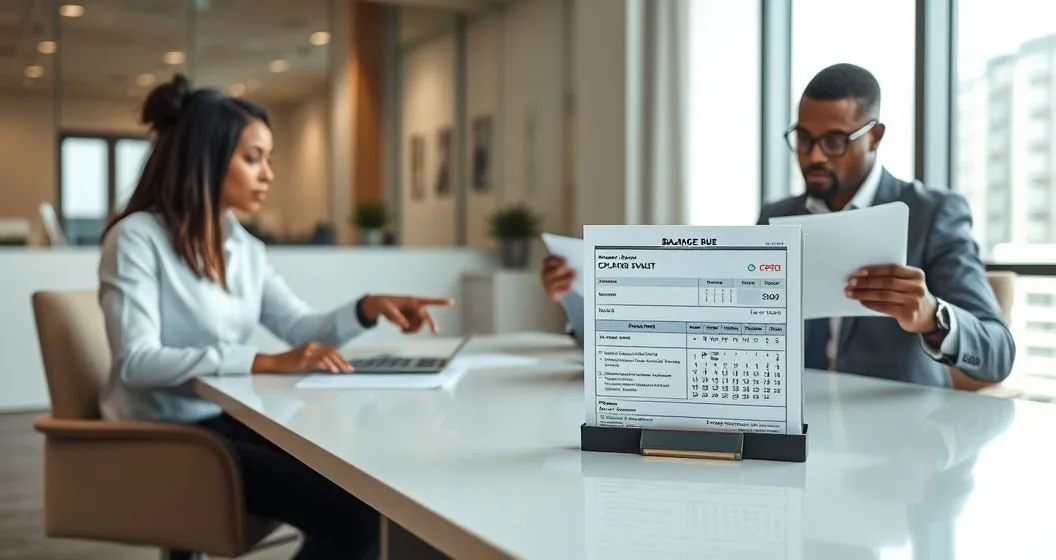Opening paragraph
A CP501 is a written reminder from the IRS that a balance shown on your return or account is still unpaid. The notice will include the amount, the ‘‘pay by’’ date, and instructions for payment or contact. You should confirm the notice is accurate and act by the date printed on it — paying, arranging a plan, or disputing the debt — to avoid further collection steps.
Confirm authenticity and the amount
- Verify the notice: compare the IRS notice number and contact information with guidance on IRS.gov. Never use phone numbers or links on a suspicious letter; go directly to IRS.gov for official contact points (IRS.gov).
- Match amounts to your tax return and account transcripts. If the CP501 lists an amount you don’t recognize, gather returns, W-2s, 1099s, bank records, and third-party statements.
Immediate response options
-
Pay in full: If possible, pay by the date on the notice to stop further penalties and interest. Payment methods include Direct Pay, Electronic Federal Tax Payment System (EFTPS), debit or credit card, or check/money order as listed on the notice (see IRS payment options: https://www.irs.gov/payments).
-
Set up an installment agreement: If you cannot pay in full, apply for an Online Payment Agreement or request a direct-debit installment agreement. Online setup is usually the fastest path; see IRS guidance for payment plans (https://www.irs.gov/payments/payment-plans-installment-agreements). FinHelp resources: see our guide on applying for an online installment agreement and how direct-debit agreements work.
-
Offer in Compromise (OIC): If you qualify and can’t pay the full amount, an OIC may settle your tax for less than the full balance. OIC eligibility is limited — consult the IRS OIC page before applying (https://www.irs.gov/settlements-prepayment/offer-in-compromise).
-
Dispute or correct the balance: If the notice is wrong, don’t ignore it. Gather supporting documents and contact the IRS using the phone or address on the notice. If the error requires a corrected tax return, file an amended return (Form 1040‑X) and keep proof of filing.
Deadlines and likely consequences if you don’t act
- Follow the pay-by date on the CP501. The notice is an early step in collection; failure to resolve it can result in follow-up notices (for example, CP503 and CP504) and eventually enforced collection, such as a tax lien or levy.
- Interest and penalties continue to accrue from the original tax due date until the balance is paid or otherwise resolved (IRS.gov).
Documentation and communication tips
- Keep a copy of the notice and all supporting documentation.
- If you mail documents or payment, use trackable mail and retain the receipt as proof of timely response.
- Record the name, badge number, and time of any IRS call. If unsure, verify the caller’s identity via IRS.gov before sharing sensitive information.
When to get professional help
- If your balance is large, the tax issue is complex, or you receive repeated notices, consult a CPA, enrolled agent, or tax attorney. In my practice I often resolve disputes faster when clients provide organized records and clear authorization to speak with the IRS on their behalf.
Related FinHelp articles
- IRS Notice CP501: Reminder Notice of Balance Due — https://finhelp.io/glossary/irs-notice-cp501-reminder-notice-of-balance-due/
- Understanding CP504 and Final Notices Before Levy — https://finhelp.io/glossary/understanding-irs-cp504-and-final-notices-before-levy/
- How to Identify and Prioritize Different IRS Notice Types — https://finhelp.io/glossary/how-to-identify-and-prioritize-different-irs-notice-types/
Professional disclaimer
This article is educational and does not replace personalized tax advice. For guidance tailored to your situation, consult a qualified tax professional.
Authoritative sources
- IRS — Understanding Your IRS Notice or Letter: https://www.irs.gov/individuals/understanding-your-irs-notice-or-letter
- IRS — Payment Options: https://www.irs.gov/payments
- IRS — Installment Agreements: https://www.irs.gov/payments/payment-plans-installment-agreements
- IRS — Offer in Compromise: https://www.irs.gov/settlements-prepayment/offer-in-compromise
(Information checked through 2025; rules and processes may change. Always confirm details on IRS.gov.)



